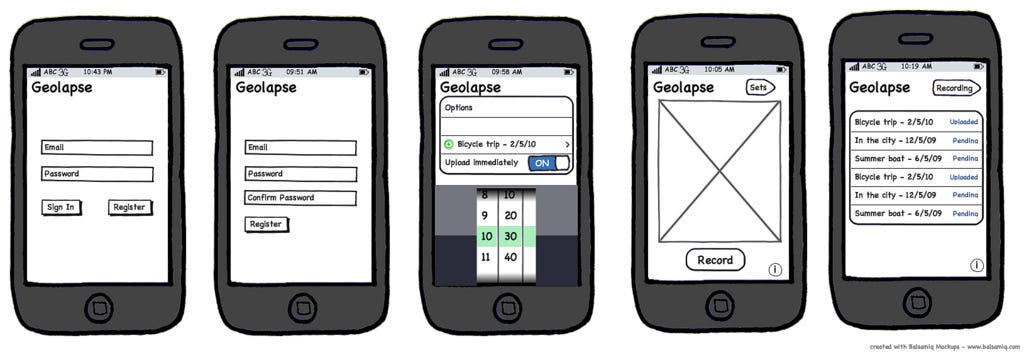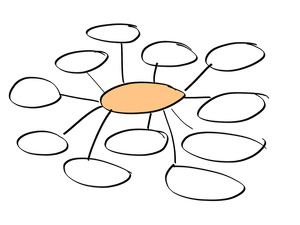Some people know exactly what they want when it comes to software but most of us don’t. In a previous article, we mentioned that one way to avoid a common pitfall when creating an app was by having a clearly defined scope of work.
It might sound fine to walk into an office with a half-baked idea, nobody has it all figured out. However, walking into an office with an idea of an idea is the first step in a wrong direction.Poorly worked ideas will end up wasting time to develop and time is money.
The more effort you put into the planning of your idea, the better you will see your product come to life. Nowadays, with the increase in outsourcing and remote work, it is critical to have your idea thought out as best as possible. Don’t worry, we’ll show you how.
Even though designers and developers might look like they live on separate planets, they share a fundamental characteristic: function. Both are used to working from a function of a product to its final form. And that is exactly how you should present your next big idea. Put yourself in their position.
“Good ideas are common — what’s uncommon are people who’ll work hard enough to bring them about.” — Ashleigh Brilliant
But where do you even begin to clearly define your idea? Below, are some starting points that can help you shape your idea to start having the conversations that can make your idea a reality.
Really get to know the idea. If the vision you want to communicate isn’t totally clear to you, it’s going to be extremely hard to explain it to anyone else. Can you “elevator” pitch it? The best way to clearly define it is to do exactly as an engineer would, break it down into pieces.
-
What is the story you are trying to convey?
-
Who is your target audience/user?
-
What are your business goals and your biggest challenges?
-
Who is your competition? (Do you have some?)
-
Any critical dates?
Having the answer to these questions in your head is a great start and will help you prepare for your meeting. But don’t stop now, how about going a little bit deeper into what you actually want?
Do some research. You are pitching a complex product and the more knowledge you have about it, the better. How about doing some pre-meeting research? It’s impressive how a little bit of research can get some technical stuff out of the way (yes, even without a degree in Computer Science).
-
Which platforms do you want your product to be on? Smartphones? Tablets? Computers? All of them? Identifying these in advance will not only help shape what exactly you want but also help developers in understanding where you want to be.
-
What operating systems are in scope? Do you want your app to be on iOS or Android? Do you want to make an app for Mac or just for use within a browser?
-
Considering your users, what will they want to do with your product? Storytelling is a popular technique used to help in this process. For example: As a [someone] I want to [do something] so that I can [get something]. Create a new Excel file and start writing these down. You can see how your idea starts taking shape.
-
What features do you see in the competition that you want to include? What are others doing in technological terms? This is what developers and designers call bench marking.
Map your idea. Once you have all of the answers to the questions above, there’s still more to do. Ideas and concepts are often confusing. One tool you (and whomever you are speaking to) might find useful are mind maps. Mind maps are used to turn something mental into something visual.
Most people that work in software development are extremely visual. Start by typing your main idea and work your way from there, using most of the elements answered above so that your idea comes to life in a form of a map.
Sure, you can use a piece of paper or a whiteboard once you are at the meeting, but for the sake of time (and cost), here are some popular (and free!) tools you can use:
Make a prototype. If you have come this far, why not get a little technical before the big meeting? Designers often use something called wire frames and mock-ups to base themselves, or to start a project. These are basically screens of your idea/product, linked together by arrows, to convey an idea of the product.

This will be one of the first steps in designing a product that users really love, and since the developers and designers are going to use it anyway, why not start doing them yourself? It doesn’t have to be pretty, it just has to send a message. After all, a picture is worth a thousand words.
To help you out, here are some tools that you can use:
-
pen and paper (no excuse here, just start drawing)
-
Balsamiq (free trial and easy to use)
-
Sketch (a little bit more technical, but really easy to learn)
-
Adobe XD (another option)
Take advantage of your benchmark and competitor’s product as a starting point.
Adapt to your audience. When you are excited about an idea, you usually present it as something big and complex. On the other hand, developers are used to thinking of concepts and products like LEGO. Brick by brick. And if you are putting yourself in their shoes, that is exactly what you should do: break it apart.
When meeting developers, they will start taking apart your idea. So why not take advantage of everything you have done thus far and start doing it yourself?
-
What are the several blocks that compose your product?
-
What is the purpose of each block?
-
How to they interact?
-
What blocks are critical for your product to take shape?
Bottom Line. The mind maps, mock-ups, and answers from the discovery questions above will help you to build, block by block. Completing the steps outlined above will not only make your idea easier to communicate but can potentially save you time, time that can be extremely valuable in the long run.
Developers and designers are used to working with business goals and ideas and making them into a reality. However, the pre-meeting planning depends on how far you are willing to go to have your idea outlined. The effort put into clearly defining your scope of work and refining your idea will help make your vision easier to understand and accelerate the process of development.
Bliss Applications partners with clients to help bring ideas to life. We have a team that can help you map out your idea and turn those rough drafts into a reality. A beautiful one. Contact Us.
This post was originally posted in the Bliss Applications Blog where I’m interning during the summer of 2017.
